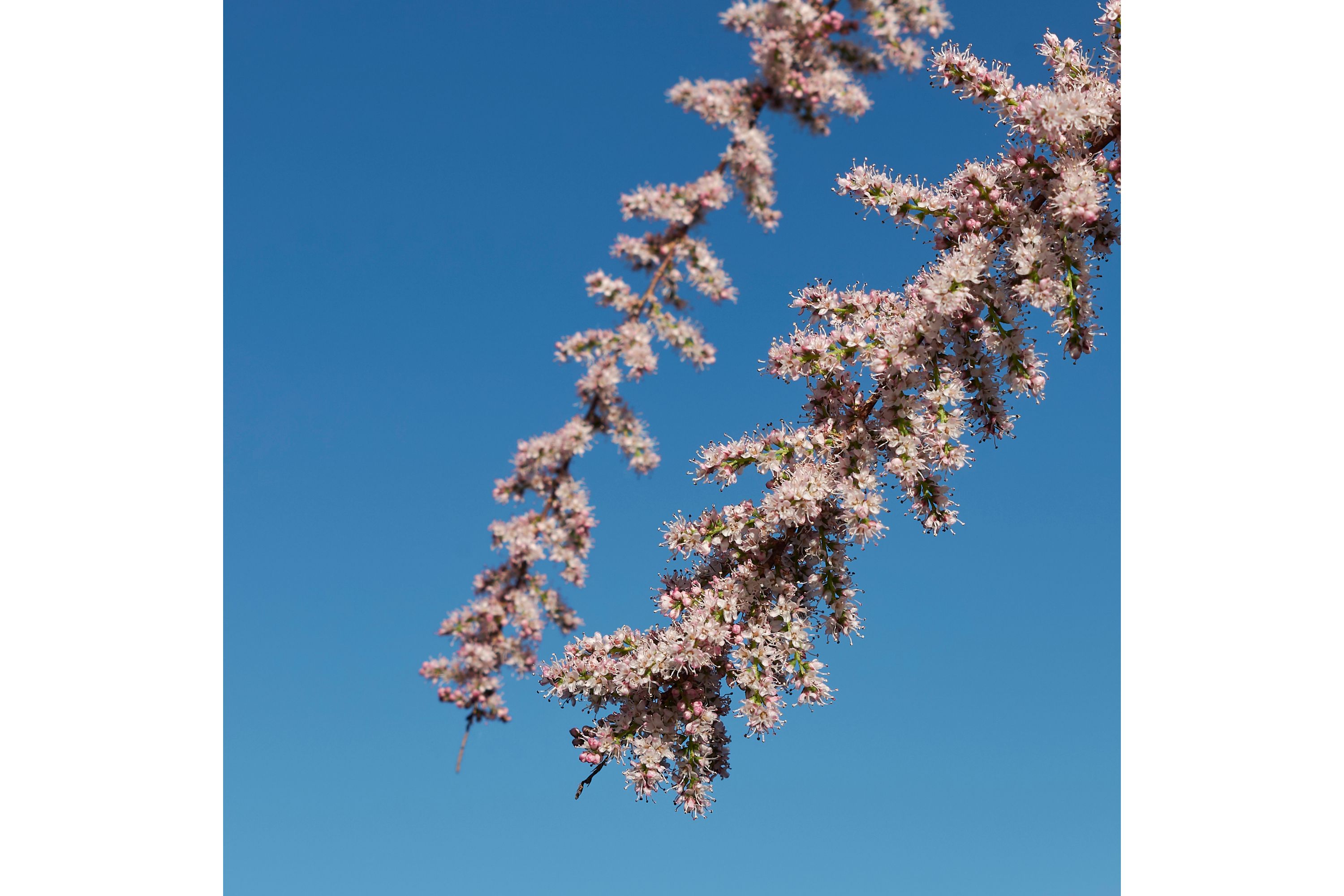Four-stamen tamarisk
(Tamarix gallica)

Description
Tamarix tetrandra is a species of flowering plant in the family Tamaricaceae, native to south eastern Europe, Turkey, Bulgaria and Crimea. Growing to 3 m (10 ft) tall and broad, it is a small deciduous tree with almost black arching branches, and tiny scale-like leaves arranged along the branches. Racemes of pale pink flowers are produced in late spring. The binomial Tamarix tetrandra means "four-stamen tamarisk". This plant is particularly associated with temperate coastal areas, but can also be grown inland in a sunny position with protection from winter winds. It has gained the Royal Horticultural Society's Award of Garden Merit. The genus Tamarix (tamarisk, salt cedar, taray) is composed of about 50–60 species of flowering plants in the family Tamaricaceae, native to drier areas of Eurasia and Africa. The generic name originated in Latin and may refer to the Tamaris River in Hispania Tarraconensis (Spain). They are evergreen or deciduous shrubs or trees growing to 1–18 m (3.3–59.1 ft) in height and forming dense thickets. The largest, Tamarix aphylla, is an evergreen tree that can grow to 18 m (59 ft) tall. They usually grow on saline soils, tolerating up to 15,000 ppm soluble salt, and can also tolerate alkaline conditions. Tamarisks are characterized by slender branches and grey-green foliage. The bark of young branches is smooth and reddish brown. As the plants age, the bark becomes gray-brown, ridged and furrowed. The leaves are scale-like, almost like that of junipers, 1–2 mm (1/20" to 1/10") long, and overlap each other along the stem. They are often encrusted with salt secretions. The pink to white flowers appear in dense masses on 5–10 cm (2" to 4") long spikes at branch tips from March to September, though some species (e.g., T. aphylla) tend to flower in the summer till as late as November. In some specific riparian habitats in the Southwestern United States and California, Tamarix ramosissima has naturalized and become an important invasive plant species. In other areas, the plants form dense monocultures that alter the natural environment and compete with native species already stressed by human activity.
Taxonomic tree:







